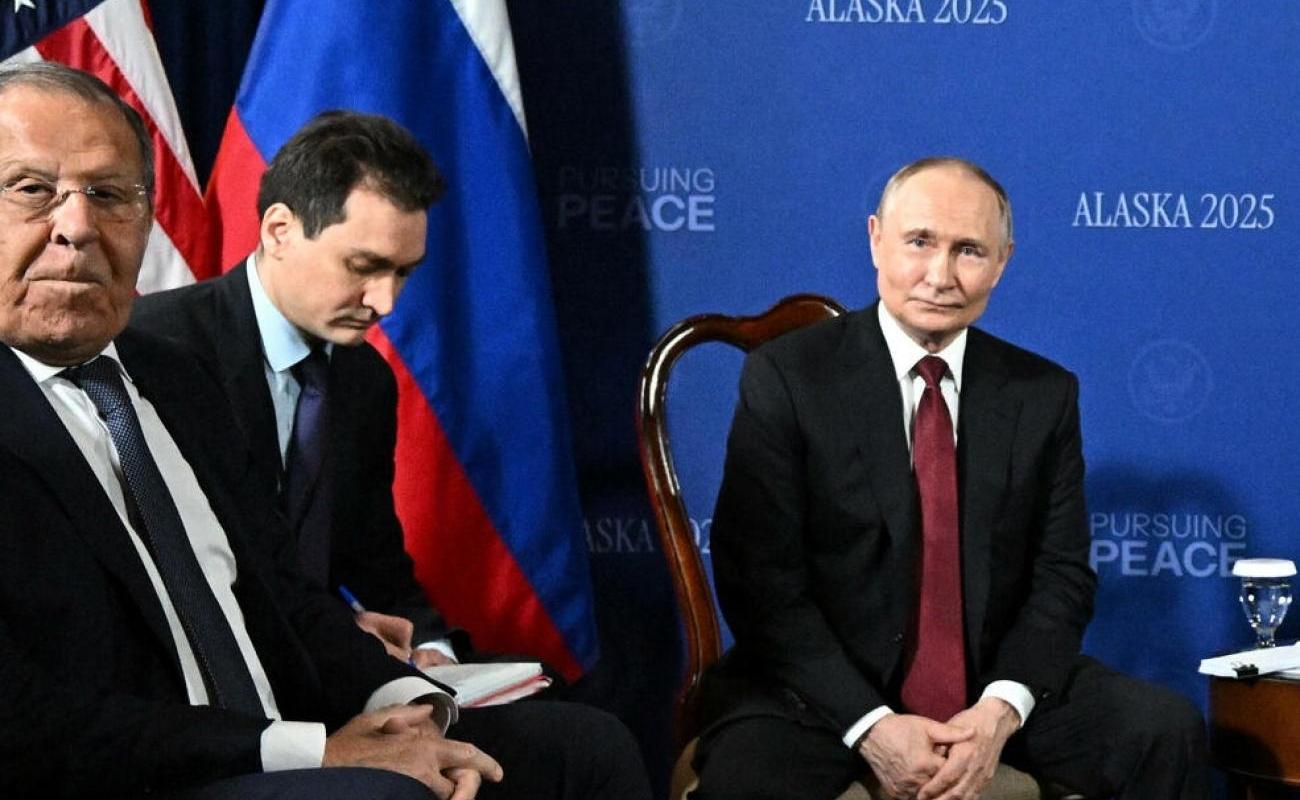Understanding Russia's ultimate goal

Many were surprised when Russian Foreign Minister Sergei Lavrov landed in Anchorage, Alaska, for the Trump-Putin summit wearing a T-shirt emblazoned with the words CCCP — the Cyrillic abbreviation for the Soviet Union. That was no coincidence, of course. What was Lavrov trying to say?
His intention, I suspect, was to say that today's Russia is as big and powerful as the USSR once was; that Vladimir Putin has restored his country to its status as a superpower worthy of global respect. Nostalgia for the Cold War era - when the Soviet Union and the United States were the world's only two superpowers - has gripped the Kremlin since the collapse of the Soviet empire.
Lavrov himself is very much a product of the past. Although he speaks the language of multilateral diplomacy fluently (thanks to his previous stint at the United Nations in New York), his penchant for intimidation has a clear Soviet origin. He seems sincere in his belief that everything was better under the USSR. His frequent trips to Pyongyang (North Korea) in recent years have hardly been pleasant. When the opportunity arose for a summit with the US president in what was once Russia, he made sure to bring his old T-shirt.
In countries once trapped behind the Iron Curtain, the message was certainly not well received. The Russian foreign minister confirmed the worst fears of Estonians, Latvians, and Lithuanians about Putin’s true goal, and it also caused unease across the South Caucasus and Central Asia. These countries remember the Soviet Union not as a magnificent empire, but as a prison.
In fact, it was the discontent among non-Russian peoples that ultimately led to the collapse of the USSR. As political repression eased after Mikhail Gorbachev's attempts to reform the crumbling Soviet system in the 1980s, it became impossible to reconcile the aspirations of these peoples with a system centered on the Kremlin. The Soviet Union had to disappear in order for its peoples to become free.
The same was true for Russia itself. Boris Yeltsin raised the Russian flag, not the Soviet one, because he envisioned a future in which his country was free from the burden of empire. He wanted a Russia ruled by Russians, and that goal could not be achieved within a complex and expensive set of imperial structures. The Soviet Union belonged to the past, while Russia, Ukraine, and all the other Soviet republics that sought independence represented the future.
This vision was not unreasonable. After the collapse of the Soviet Union, an immediate agreement was reached to respect the old borders between the former republics, in order to prevent new conflicts. When Russia responded with extreme brutality to Chechnya’s attempt to declare independence, the rest of the world accepted the Kremlin’s claim that the breakaway enclave was within Russia’s borders.
After that, there was no reason why Russia and Ukraine - like all the other once-captured nations of the Soviet Union - could not live in harmony. Of course, there could always be some competition, perhaps even fierce rivalry; but these dynamics could be healthy. As good neighbors, all these countries could also become good partners - as is the case in Western Europe.
But it didn’t end there. Imperial nostalgia began to creep back into the Kremlin. Threatened by democratic developments in several former Soviet states, Putin’s regime became increasingly authoritarian. Over time, a more democratic, liberal Ukraine came to be seen not as a partner but as a threat to the decidedly illiberal, anti-democratic regime in Russia. Putin began to describe Ukraine as “anti-Russia,” even though Ukrainians had never held such a view. They simply wanted Ukraine to be Ukraine.
It is not surprising that Lavrov’s T-shirt is seen as a threat in every country where Soviet satellite regimes once existed. But it must also be seen as a threat to Russia itself. If the Kremlin continues to be driven by imperial nostalgia, Russia will never be able to be Russia. The destruction and attempted occupation of Ukraine will weigh on it for generations. The last vestiges of the Kremlin’s imperial project may survive if China sees Russia as a useful satellite (it has raw materials and energy, and a permanent seat on the UN Security Council, but not much more). But in doing so, Russia will be giving up the future of a relatively peaceful, prosperous, modern nation-state – a goal that was entirely achievable.
The Soviet Union was a colossal failure. It was founded in 1922, promising humanity a bright new future, but when it collapsed seven decades later, Western countries had to send emergency humanitarian aid. At the height of the USSR, Nikita Khrushchev boasted that they would “bury” the West; in reality, they were digging their own grave. We should all be grateful to Lavrov for reminding us of that sad legacy. The nostalgia he displayed in Alaska is a threat to many, including ordinary Russians.
The author is a former Prime Minister and Minister of Foreign Affairs of Sweden; he was the EU Special Envoy for the former Yugoslavia and Co-Chair of the Dayton Peace Conference
